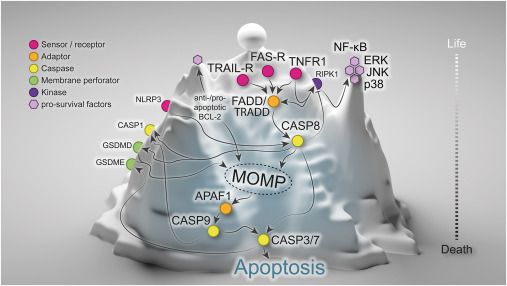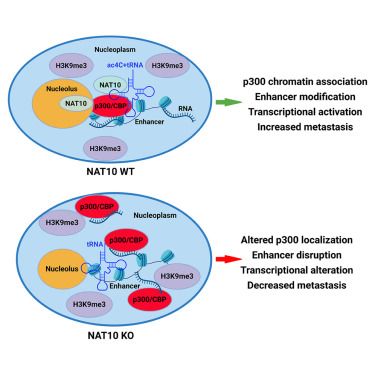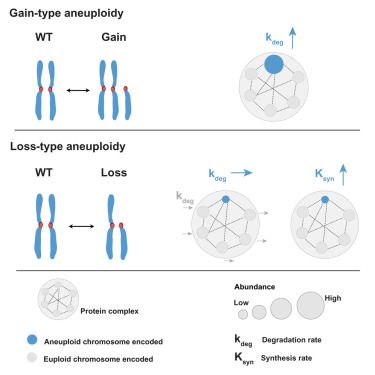
Timing of transcription controls the selective translation of newly synthesized mRNAs during acute environmental stress
07.12.2025 16:19 — 👍 4 🔁 1 💬 0 📌 0@cp-molcell.bsky.social
Molecular Cell is a Cell Press journal that aims to publish the best papers in molecular biology.

Timing of transcription controls the selective translation of newly synthesized mRNAs during acute environmental stress
07.12.2025 16:19 — 👍 4 🔁 1 💬 0 📌 0
Transcriptome-wide mRNP condensation precedes stress granule formation and excludes new mRNAs
06.12.2025 16:19 — 👍 3 🔁 1 💬 0 📌 0
Recycling of ribosomes at stop codons drives the rate of translation and the transition from proliferation to RESt
05.12.2025 23:57 — 👍 3 🔁 1 💬 0 📌 0
UMP functions as an endogenous regulator of NR4A1 to control gastric cancer progression
05.12.2025 20:14 — 👍 0 🔁 0 💬 0 📌 0
Deubiquitinases cleave ubiquitin-fused ribosomal proteins and physically counteract their targeting to the UFD pathway
05.12.2025 16:19 — 👍 3 🔁 2 💬 0 📌 0
Structure of the transcriptional co-activator SAGA complex, including the histone acetyltransferase module
04.12.2025 23:58 — 👍 2 🔁 1 💬 0 📌 0
High-throughput capture of actively transcribed region-interacting sequences reveals an intricate promoter-centered regulatory network
04.12.2025 20:14 — 👍 3 🔁 0 💬 0 📌 0
Metabolic environment-driven remodeling of mitochondrial ribosomes regulates translation and biogenesis
04.12.2025 16:19 — 👍 3 🔁 1 💬 0 📌 0
Read the latest issue here www.cell.com/molecular-ce...
04.12.2025 16:14 — 👍 0 🔁 0 💬 0 📌 0
Online Now: The landscape of regulated cell death: It’s all downhill from here Online now:
04.12.2025 12:33 — 👍 4 🔁 0 💬 0 📌 0
Online Now: The Ppl protein senses 3′-hydroxyl DNA overhangs and NTP depletion to halt phage infection Online now:
03.12.2025 23:57 — 👍 6 🔁 4 💬 0 📌 0
Online Now: NAT10 promotes cancer metastasis by modulating p300/CBP activity through chromatin-associated tRNA Online now:
03.12.2025 20:14 — 👍 1 🔁 0 💬 0 📌 0
Online Now: Rate-limiting enzymes in nucleotide metabolism synchronize nucleotide biosynthesis and chromatin formation Online now:
03.12.2025 16:19 — 👍 4 🔁 2 💬 0 📌 0
Online Now: In vivo proteomic labeling reveals diverse proteomes for therapeutic targets Online now:
01.12.2025 20:14 — 👍 6 🔁 2 💬 0 📌 0
Online Now: Attenuation of ATM signaling by ROS delays replicative senescence at physiological oxygen Online now:
01.12.2025 16:19 — 👍 1 🔁 0 💬 0 📌 0
Online Now: Timing of transcription controls the selective translation of newly synthesized mRNAs during acute environmental stress Online now:
27.11.2025 20:15 — 👍 15 🔁 3 💬 0 📌 2
Online Now: Transcriptome-wide mRNP condensation precedes stress granule formation and excludes new mRNAs Online now:
27.11.2025 16:20 — 👍 4 🔁 1 💬 0 📌 0
Online Now: Recycling of ribosomes at stop codons drives the rate of translation and the transition from proliferation to RESt Online now:
27.11.2025 12:32 — 👍 3 🔁 3 💬 0 📌 0
Online Now: DNA bendability inside the nucleosome regulates INO80’s nucleosome positioning Online now:
26.11.2025 23:57 — 👍 2 🔁 1 💬 0 📌 0
Let’s wrap things up: Open and closed hypernucleosomes in Asgard archaea
26.11.2025 20:14 — 👍 7 🔁 4 💬 1 📌 0
A new horizon unfolding for insulin signaling in health and disease
26.11.2025 12:32 — 👍 3 🔁 0 💬 0 📌 0
Getting sticky: How nuclear speckles tune the condensation-prone proteome
25.11.2025 20:14 — 👍 1 🔁 1 💬 0 📌 0
Debranching enzyme DBR1-mediated lariat RNA turnover requires ALBA proteins in Arabidopsis
25.11.2025 16:19 — 👍 2 🔁 0 💬 0 📌 0
Divergent proteome tolerance against gain and loss of chromosome arms
25.11.2025 12:33 — 👍 1 🔁 0 💬 0 📌 0
A role for human senataxin in contending with pausing and backtracking during transcript elongation
24.11.2025 23:58 — 👍 3 🔁 0 💬 0 📌 0